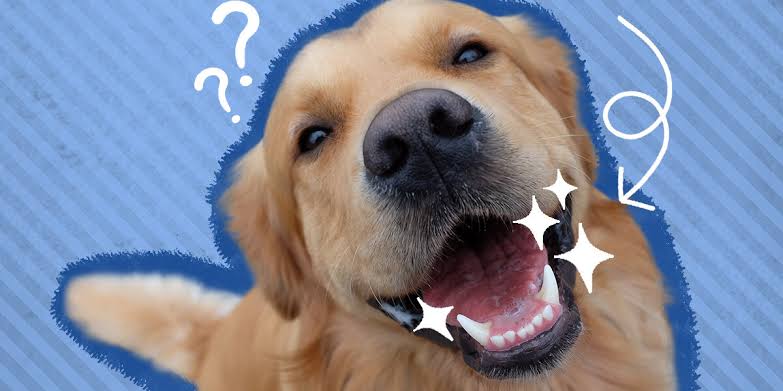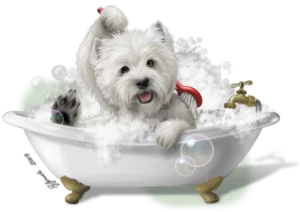Are Dog Mouths Clean?

Are Dog Mouths Clean?:- We’ve all heard the age-old saying that a dog’s mouth is cleaner than a human’s, but where does this idea come from? More importantly, is there any truth to it? According to the American Kennel Club, the short answer is “no, dogs’ mouths are not cleaner than humans’.” But the answer isn’t quite as simple as yes or no.
In reality, comparing a dog’s mouth to a human’s isn’t even an accurate comparison. The two are biologically and chemically different, making the notion of one being “cleaner” than the other more complex than it appears. Let’s dive into the facts and separate myth from reality.

Are Dogs’ Mouths Clean?
Let’s cut straight to the chase: your dog’s mouth is not cleaner than yours. It’s not fresh, and it certainly isn’t “cleaner” in the traditional sense. In fact, studies have shown that a dog’s saliva contains hundreds of bacterial species that are unique to canines. Researchers have discovered at least 600 different species of bacteria living in a dog’s mouth. While that may seem alarming, humans actually host even more—around 615 species. This similarity highlights that both dogs and humans have an abundance of bacteria in their mouths, just of different kinds.
However, what’s crucial to note is that a dog’s bacteria can pose health risks if transmitted to humans. Some germs passed from dog to human can cause illnesses. Though the risk is low, it’s best to limit direct contact with your dog’s mouth, such as through kisses, to avoid any potential transmission of bacteria or parasites. Stick to snuggles for your affection!
Understanding Dog Mouth Anatomy
While a dog’s mouth might appear similar to a human’s in structure, there are distinct differences that affect how it functions and the types of bacteria it harbors.
– Dog Tongue: Like a human tongue, a dog’s tongue is multifunctional. It aids in guiding food and water into the esophagus, has taste buds for processing tastes and scents, and helps dogs cool off through panting. A dog’s tongue is also a cleaning tool; dogs use it to groom themselves.

– Dog Teeth: Dogs’ teeth are designed for chewing, tearing, nibbling, and grinding food. They also use their teeth during play or to protect themselves. A dog’s dental health is key to their overall health, much like humans.
– Dog Gums: A dog’s gums play an important role in holding their teeth in place, and the color of their gums can be an indicator of their health. Healthy gums should be a bright pink color and moist to the touch.
– Dog Lips: Dogs have lips, which are often referred to as “flies.” The structure and appearance of these lips vary between breeds, but they play a role in protecting the mouth. Some dogs have lip folds or ridges that serve practical purposes, such as gripping objects or protecting the mouth from injury during eating.
One thing that many dog owners may not realize is that these lip folds can accumulate bacteria if not properly cleaned. Dogs with particularly pronounced lip folds can develop conditions like lip fold dermatitis, so it’s important to keep those areas clean and dry.
The Role of Dog Saliva
Dog saliva serves multiple purposes. It keeps the mouth moist, helps in the digestion of food, and contains enzymes that break down food as it moves through the digestive system. Dog saliva also has some antimicrobial properties, which may help reduce the risk of infection. However, this doesn’t mean that licking wounds or injuries is good for a dog—or for you. In fact, allowing a dog to lick a wound may cause further irritation or introduce harmful bacteria.
Comparing Bacteria: Dog’s Mouth vs. Human’s Mouth
One of the core reasons that the comparison between dog and human mouths is so complex is the difference in the types of bacteria that thrive in each. While both humans and dogs harbor hundreds of bacterial species, the makeup of these bacteria is very different.
For instance, a bacterial family known as *Porphyromonas* is present in both dog and human mouths, specifically the strains *P. gingivalis* in humans and *P. gulae* in dogs. These strains are pathogens that can cause periodontal disease in both species. So, there is some overlap when it comes to disease-causing bacteria, but the majority of bacteria in a dog’s mouth are unique to dogs and do not cause illness in humans.
Moreover, while a dog’s mouth contains potentially harmful bacteria such as *Salmonella* and *E. coli*, most of these germs are not zoonotic, meaning they cannot be transmitted between species. In most cases, a dog licking your face or hands is unlikely to cause you any harm. However, bites from dogs do pose a risk because they can transfer bacteria directly into your skin.
To minimize any potential health risks, pet owners should ensure their dogs are on proper parasite prevention and maintain a routine of good dental hygiene. Brushing your dog’s teeth regularly and scheduling vet visits for dental checkups can help reduce the bacterial load in their mouths and keep their gums healthy.
The Truth Behind Doggy Kisses
Dog owners often perceive doggy kisses as a sign of affection, but they come with certain risks. While it’s comforting to think that your dog’s saliva is harmless, it’s worth remembering that your dog uses its mouth to explore its environment. Dogs often lick or chew on objects like dirt, garbage, or even feces, which can introduce harmful bacteria into their mouths.

That said, the actual risk of getting sick from a dog’s lick is relatively low. Unless your dog has recently come into contact with harmful bacteria, the chance of contracting an illness from a lick is slim. However, if your dog has poor dental hygiene or is not on a proper parasite prevention plan, those risks can increase.
How to Stay Safe?
To ensure both you and your dog stay healthy, there are some simple steps you can take:
1. Dental Hygiene: Brush your dog’s teeth regularly using dog-specific toothpaste and consult your vet about professional cleanings.
2. Parasite Prevention: Use vet-recommended parasite control treatments to prevent the spread of zoonotic parasites.
3. Limit Direct Contact: Avoid allowing your dog to lick your mouth or any open wounds.
4. Keep Your Dog Clean: Regular baths and grooming can help reduce the spread of bacteria from your dog’s environment into your home.
Conclusion
While the notion that a dog’s mouth is cleaner than a human’s may be comforting, it’s not based on science. Both humans and dogs have bacteria-filled mouths, but these bacteria are largely species-specific and pose little risk to the other. To stay on the safe side, it’s best to limit doggy kisses, maintain good dental hygiene for your pet, and ensure they’re receiving appropriate health care to minimize the risk of illness for both you and your furry friend.
Also Read:-




